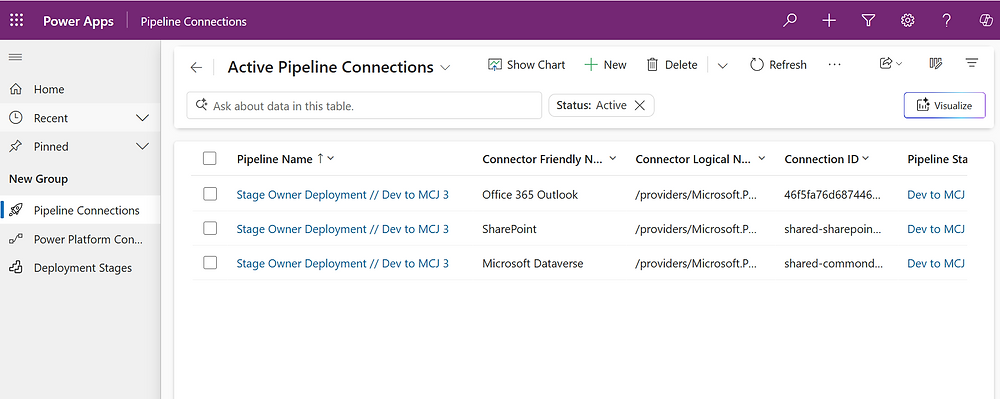Now Reading: Dynamics CRM Online – “Best Practices”
-
01
Dynamics CRM Online – “Best Practices”
Dynamics CRM Online – “Best Practices”
I love the idea of “Best Practices”. Whenever I hear the term I think, “well, there you go, that’s that way to do it”. CRM is one of those beasts that looks complicated at first glance; not just Dynamics CRM Online, but any CRM. But unlike many things that just “look” complicated, CRM actually is. Many new users fumble around for a while, get frustrated, and ultimately throw up their hands, go online and search for “Best Practices”, hoping to find that single page of truth. Like there is some simple recipe, that after first attempting to figure things out without an instruction manual, will immediately make the obvious clear. I titled this post to snare those people. So is there such a shortcut? Yes, find a Microsoft partner with competency in Dynamics CRM Online, or better yet, look at our RapidStartTM for Dynamics CRM Online. “Not so fast Steve, you think I am just going to open my wallet and shower you guys with cash to make my life easy?” Ugh, I suppose not; fine, we’ll do it your way.
 The first thing to understand about “Best Practices” is that they are ultimately the result of making every mistake possible, and then doing the opposite. Another thing to understand is that yesterday’s “Best Practices” are today’s mistakes. Business changes, methodology changes, technology changes, customer changes all conspire to keep the shelf life of Best Practices pretty short. It is not enough to simply adapt to any one of these factors. For example the move to cloud necessitates significant changes in how you deploy technology, but it also impacts your business, customers and methodologies.
The first thing to understand about “Best Practices” is that they are ultimately the result of making every mistake possible, and then doing the opposite. Another thing to understand is that yesterday’s “Best Practices” are today’s mistakes. Business changes, methodology changes, technology changes, customer changes all conspire to keep the shelf life of Best Practices pretty short. It is not enough to simply adapt to any one of these factors. For example the move to cloud necessitates significant changes in how you deploy technology, but it also impacts your business, customers and methodologies.
The challenge today is to be able to take enough steps back to see a larger picture. This has never been a strong skill of technology folks who have historically not stepped back far enough to even exit the threshold of the server room. Also, to many CXOs, everything that involves a keyboard is a nail, and their IT Department is the hammer. So, my first Best Practice is the realization that CRM has nothing to do with IT. Of all of the technologies foisted upon us over the years, CRM has had both the highest potential and the highest failure rate. Why? Because too often CRM is approached the same way email is approached, as a technical solution to be deployed by technical people. To be fair, before Dynamics CRM Online, you had little choice but for IT to have a major role, but now that the entire technology layer has been abstracted by Microsoft, what is left to be done has little to do with IT, and everything to do with your business.
My second Best Practice is around intent. If your primary motivator for deploying CRM is keeping tabs on, or measuring your staff, it will fail. While having visibility into your team’s performance is an absolute benefit of Dynamics CRM Online, it cannot be the goal. If it is, you will suffer the second major trap of any CRM, lack of user adoption. While some minimal benefit can be gained by the marginal use of CRM, business transformation can only result from enthusiastic and complete team adoption of Dynamics CRM Online. “But Steve, I don’t really want to “Transform” my business!”. Sure you do, or you would not be reading this. Face it, Dynamics CRM Online is not accounting software; the mere fact that you are even exploring it, means you have issues, issues that you think CRM can solve. And you would be right in thinking (hoping) this is the case. At the end of the day that is exactly what Dynamics CRM Online is, a promise of solutions to various problems with the most important part of any business: its customers.
So with such high promise and potential, why have so many CRM deployments failed? A lack of top-down support. If the responsibility for transforming your business is abdicated to your sales manager, it will fail. This is not news, CRM proponents have been screaming this from the mountaintop for years. So why are so many “doomed to fail” deployments still led by middle managers? From my experience, many CXOs fail to grasp, or believe in, the potential of Business Transformation, and instead view CRM as a glorified contact manager. To these leaders, I suggest you skip CRM completely, it will fail. While CRM, and even Dynamics CRM Online, may have their origins in contact management, they left that behind years ago. Do I expect that the CEO is going to sit in on every call and meeting and review every step of a deployment? No, but they better have a strong finger in it, pointing up, and everybody must know that this is important to leadership and the company. So my third Best Practice: The effort must be championed by a CXO.
Okay, so let’s assume that you have bought into my first three “Best Practices”; IT is in the back seat, our goal is solving customer problems and not big brother, and the CXO is holding the sword high. My next “Best Practice”: Wipe your mind of how it’s always been done. If the way you have always done things was working, you definitely would not have made it this far into this post. Let’s not barricade the path to a better solution with the obstacles of what we already know did not achieve your goals. I get that you are not comfortable walking backwards, but if you keep walking forward over a cliff, then maybe it’s time to learn how to walk backwards. You may find that walking backwards actually moves you forward. A big part of our job as a Microsoft CRM Partner, is keeping our customers from succumbing to the gravitational pull of historically unsuccessful, yet very comfortable habits. Forceworks will not allow you to fail with Dynamics CRM Online. I will literally throw a tantrum on top of your conference table if that what it takes to keep your team from heading towards a path to failure.
Ironically, as I am typing this post, I just received an email from a customer. We are awaiting import data from them for Dynamics CRM Online and he says “We don’t have any Leads, just Contacts”. Of course I have to call bullshit on that. I have conveyed several times the concept of a wide river, with Leads on one side and Contact/Account/Opportunities on the other, and a well guarded bridge to cross and why this is critical. If an organization does not have any Leads, they either still do not understand the concept, or they are in serious trouble. Leads is where our future customers come from. We all have Leads. Stay tuned for another post on this topic as this post has already gone on long enough.
The post Dynamics CRM Online – “Best Practices” first appeared on Steve Mordue MVP.















